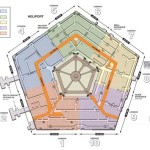The Solar System Plan Home: A Comprehensive Guide
Embark on a cosmic adventure by creating your own stellar abode with a Solar System Plan Home! This celestial sanctuary offers a harmonious balance between the wonders of space and the comforts of home. Discover the essential aspects of this interplanetary haven, designed to transport you to the stars:
1. Stellar Architecture: A Cosmic Foundation
Your Solar System Plan Home begins with a foundation that reflects the celestial bodies it represents. Consider modular structures shaped like planets, featuring sleek curves and organic forms. Illuminate your dwelling with bioluminescent walls that mimic the ethereal glow of distant galaxies.
2. Celestial Illumination: Harnessing the Cosmos
Capture the cosmic glow and bathe your home in natural light. Install holographic windows that project breathtaking views of celestial bodies. Adjust the lighting to mimic different phases of the moon, creating an ever-changing ambiance. Utilize solar panels adorned with shimmering stardust to generate renewable energy, powering your home with the energy of the stars.
3. Planetary Interiors: A Gateway to Celestial Delights
Step inside your celestial abode, where each room embodies a planetary essence. Transform your living room into a celestial haven with plush furniture inspired by asteroid formations. Design a futuristic kitchen adorned with sleek countertops resembling the rings of Saturn. Create a tranquil bedroom illuminated by the ethereal glow of celestial bodies, inviting you to drift off to cosmic dreams.
4. Space-Age Amenities: Intergalactic Conveniences
Embrace the wonders of space within the comforts of your home. Install a holographic projector that displays educational videos and immersive documentaries about the Solar System. Introduce a zero-gravity chamber where you can experience the weightlessness of cosmic exploration. Create a meditation room with calming soundscapes of distant planets, helping you connect with the celestial realm.
5. Celestial Sanctuary: Your Cosmic Retreat
Find solace and rejuvenation in your Solar System Plan Home. Designate a dedicated sanctuary, perhaps a rooftop terrace with panoramic views of the night sky. Install a telescope to observe distant planets and galaxies. Surround yourself with cosmic scents, such as lavender and jasmine, known for their calming and ethereal properties. Create a harmonious environment where you can unwind and reconnect with the celestial wonders.
6. Interplanetary Garden: A Celestial Oasis
Bring the cosmos indoors with an interplanetary garden. Cultivate exotic plants that thrive under the glow of artificial celestial bodies. Create a miniature solar system within your garden, featuring potted plants representing different planets. Inhale the fresh air infused with the celestial scents of blooming cosmos and star jasmine, connecting you to the cosmic vitality.
7. Cosmic Connections: A Bridge to the Stars
Your Solar System Plan Home is not just a dwelling; it's a gateway to the stars. Engage in virtual reality experiences that simulate space missions and lunar landings. Host stargazing events with friends and family, sharing the wonders of the cosmos. Take part in online astronomy clubs and engage in celestial discussions, deepening your connection to the vastness of space.
Create a home that embodies the boundless wonders of the Solar System. Immerse yourself in celestial beauty, experience the marvels of space, and connect with the cosmic forces that govern our existence. Your Solar System Plan Home is more than a shelter; it's a gateway to the stars, where you can explore the universe from the comfort of your own abode.

Solar Power 101

Home Solar Power Systems Letsgosolar Com

8 Simple Steps To Plan A Home Solar Electric System In 2024

Solar Power System 101 Facts Quick Guide And More

How To Create A Basic Solar Panel Wiring Diagram

Solar Hybrid Home Plan

Services Roof Solar Panel Experts In Bwood United Electric

How To Plan For A Home Solar System Hoymiles

Solar Panels Our S Services Sunrun

Pin On Earthship








